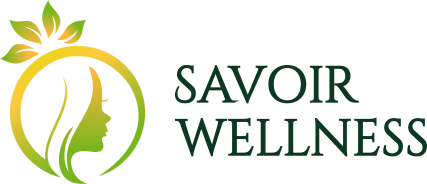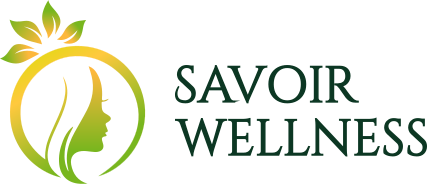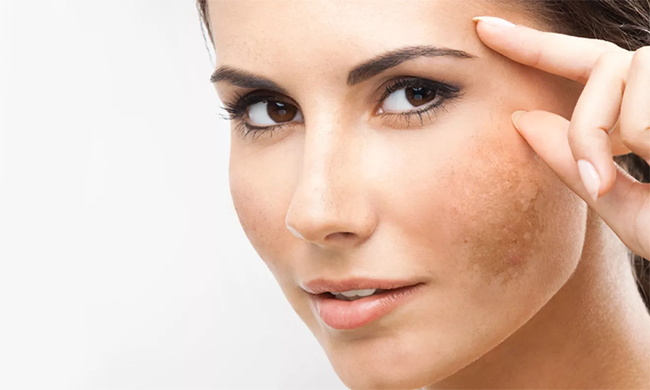Psoriasis is a skin disease that results in inflammation with itchy, scaly patches on the knees, elbows, trunk, and scalp. It can be due to family history or can be triggered by bacterial or fungal infection or can be due to a healthy lifestyle. Treatments are obtainable to contrive symptoms and one should try healthy lifestyle routines and getting along processes to live finer with Psoriasis.
In this composition, we will talk about Psoriasis disease, its symptoms, causes, types, and possible treatment available.
What is Psoriasis?
Psoriasis is an autoimmune skin constraint that results in skin cells building up and forming dry scales inducing itchiness and affliction. It is a considerably common and chronic skin ailment that erupts suddenly and can be intolerable with no specific treatment.
The root cause of psoriasis
People of any age, sex, or ethnicity can acquire Psoriasis. Psoriasis plaques cause regions of thick skin shrouded in scales.
It is an immune system situation that results in skin cells thriving more instantaneously than normal leading to dry or scaly patches. Skin infection, climate, skin injury, an excessive amount of smoking, heavy alcohol consumption, or inescapable medicines like lithium may initiate Psoriasis.
What are the beginning stages of psoriasis?
The signs of Psoriasis initially masquerade in the skin. The skin with lighter pigment builds up red to silver skin patches. The skin with darker pigment acquires purple or dark brown patches with gray scales. In the outset stages, one can detect a raised skin region that is protruded and itchy, tiny red spots around arms or legs, painful bulges with pus on hands or feet, and crumbling, or discoloration of nails.
The body areas most commonly affected by Psoriasis
A Psoriasis inflammation can indicate anywhere on the skin. It can typically impact a small area on different body regions. It primarily impacts the following body parts depending upon the type and symptoms:
- Elbows and knees
- Face and mouth
- Scalp
- Finger and toenails
- Genitals
- Palms and feet
- Lower back
Types of Psoriasis
Psoriasis may have several types counting on causes, indications, or symptoms. Psoriasis is primarily of seven types as listed down.
- Plaque Psoriasis – Plaque Psoriasis is the most familiar kind which results in dry, scratchy plaques covered with scales. It emerges on elbows, knees, lower back, and scalp.
- Inverse psoriasis – Inverse Psoriasis results in smooth patches of inflamed skin which worsen with friction, sweating, and fungal infection. It influences the skin fold of the groin, buttocks, and breasts.
- Guttate psoriasis – Guttate Psoriasis impacts young grown-ups and youngsters and is activated by strep throat bacterial infection simulating the trunk, arm, or legs.
- Pustular psoriasis – Pustular Psoriasis is an infrequent type of condition leading to pus-filled blisters in a small region of palms or soles.
- Nail psoriasis – Nail Psoriasis influence fingernails or toenails leading to pitting, abnormal nail growth, crumbling, and discoloration
- Erythrodermic psoriasis – Erythrodermic Psoriasis is the least common type which can shroud the whole body with a peeling inflammation and can be a short or long time situation.
- Sebo psoriasis – Sebo Psoriasis is an overlapping of seborrhoeic dermatitis and Psoriasis indicated by red or purple skin inflammation and yellow scaling of skin generally at the scalp, face, chest, or skin folds.
Symptoms of Psoriasis
The broadly ordinary symptoms of Psoriasis include plaques. Plaques glance like a rash or little bump, the skin on the plaque is discolored and the plaque is squamous and sheds effortlessly. In acquisition to skin plaques and rashes, one can experience other symptoms which include:
- Itchy skin
- Cracked and dry skin
- Cracked or crumbled nails
- Joint pain
- Swelling or fever
- Discoloration of skin
- Painful skin folds
The symptoms usually vary with diverse types of Psoriasis from dry or itchy scales (Plaque Psoriasis) to redness and pain ( Guttate or Inverse Psoriasis) to blisters with pus (Pustular Psoriasis) to crumbled nails ( Nail Psoriasis) to yellow skin scaling ( Sebo Psoriasis) to peeling inflammation (Erythrodermic Psoriasis).
Can psoriasis be cured?
Psoriasis is considered severe when it affects more than 10 percent of the body. Psoriasis is considered more severe if it cannot be treated with topical medication alone. It can be managed better with self-care measures like:
- Taking a daily bath with Epsom salt or oatmeal.
- Maintaining skin moisturizing using ointment-based products.
- Covering the affected region with prescribed cream or ointments.
- Disclosing skin to brief sunlight daily.
- Evading smoking and alcohol consumption.
- Ameliorating stress by meditation or yoga.
Psoriasis cannot be remedied completely but its symptoms can be reduced and slight changes can help to cure Psoriasis completely in the low to moderate stage.
The treatments available for Psoriasis
Psoriasis treatment strives to eradicate the growth of skin cells fast and to peel off scales. Alternatives include topical therapy, phototherapy, and medication. The variety of therapy required by one individual depends upon the severity of Psoriasis and the responsiveness of the skin to therapy and self-care measures.
Topical Therapy includes creams and ointments
Corticosteroids are prescribed medication for treating mild to moderate Psoriasis. Hydrocortisone is available as an ointment or cream for susceptible skin. Triamcinolone or clobetasol is a substantial corticosteroid for smaller and less susceptible areas.
Vitamin D analogs in the form of calcipotriene or calcitriol slow down skin cell growth.
Retinoids like Tazarotene are available as gel or cream but can result in skin irritation.
Salicylic acid shampoos and scalp solution reduces scalp psoriasis.
Anthralin tar cream hinders skin cell growth and makes skin smoother.
Phototherapy or light therapy
Phototherapy is operated to deal with moderate to severe Psoriasis ang with medications. It involves skin exposure to controlled amounts of natural or artificial light.
- Short and daily Sunlight exposures or heliotherapy enhance Psoriasis treatment as its natural light.
- Goeckerman therapy incorporates coal tar treatment with light therapy as coal tar drives skin more responsive to ultraviolet rays.
- Controlled doses of UVB (ultraviolet B) broadband or narrowband light can take care of single psoriasis patches or widespread psoriasis.
- Excimer lasers target UVB light only on the concerned skin. It insists on fewer sessions as more influential UVB light is used.
Oral or injected medication
In case of moderate to severe psoriasis practitioners can prescribe oral or injected medications which can be utilized for only a brief duration as they handle probable severe side effects.
- Steroids like an injection of triamcinolone for persistent psoriasis patches.
- Retinoids like acitretin pills ameliorate skin cell production.
- Biologic drugs injection like infliximab, etanercept, and apremilast alter the immune system to disrupt the psoriasis cycle and improve symptoms and signs.
They must be utilized with caution as they can repress the immune system and boost infection risks.
- Methotrexate is given as a single oral dose weekly basis to repress the rash.
- Other medications available are hydroxyurea, cyclosporine, and thioguanine which act differently and should be taken after contacting a practitioner.
Conclusion
Psoriasis is an immune system ailment that results in skin irritation or skin scaling with pain and redness and may get triggered by climate differences, family lifestyle habits, or infections.
With little change in self-care routine and properly guided medications, Psoriasis can be cured and treated before becoming severe and incurable.
So be patient and strong.


